insert time cliché here
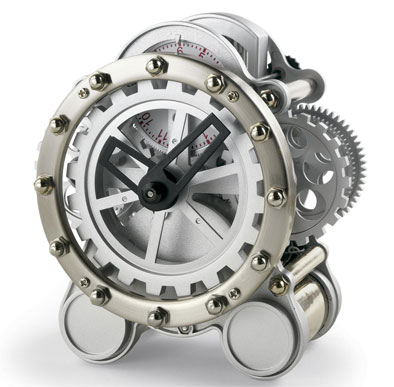
Like many pieces of furniture, the essential function of a clock is rather simple–yet, our timepieces still manage to come in a bewildering variety of shapes and sizes. Above: this alarm clock from Gump’s in San Francisco shows that beauty needn’t be skin deep: all of its inner workings are visible down to the cogs. A brushed metallic rim with exposed metal screws helps to give this piece a nice dose of style.

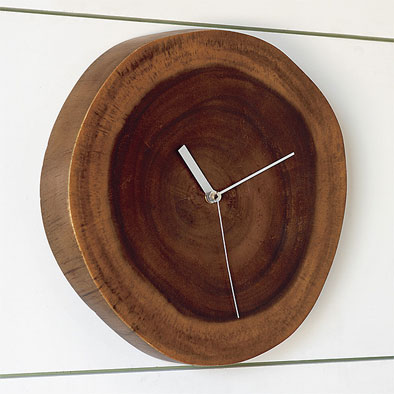
If the complicated/mechanical-look is not to your taste, this Wood Plinth clock from West Elm goes back to the basics. The entire frame except for the movement is made from a slice of acacia, and then lacquered for a smooth finish. As this is primarily manufactured by Nature herself, the clocks can vary significantly in shape and size.
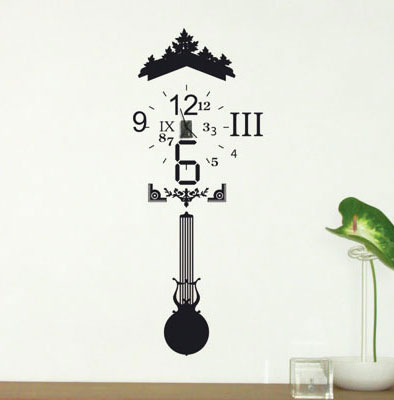

For those of you who feel the Wood Plinth clock’s natural features leave a bit too much to chance yet love its simplicity, French publishing house Domestic’s “Vynil” is worth considering. Yup–Vynil is made by a publishing house, since the vast majority of its components are little more than vinyl stickers which you can position as you please. Frankly at $80 I think it’s a bit much for a bunch of stickers (which are arguably stylish) and a $10 clock movement, but enough people are buying it–it’s currently sold out at Rare Device.
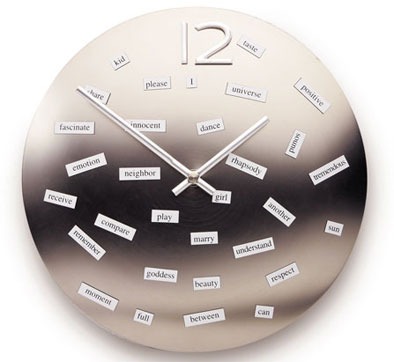
Time (and arguably causality) is purely a mental construct, yet one that occupies a very tangible role in our daily lives. The Magnet Words Clock brings a different mental aspect to the forefront with magnetized words that you can shuffle around its face. I particularly like the “dance” and “play” stickers–they just need to throw in a few like “food coma”, “party” and “me-time”.
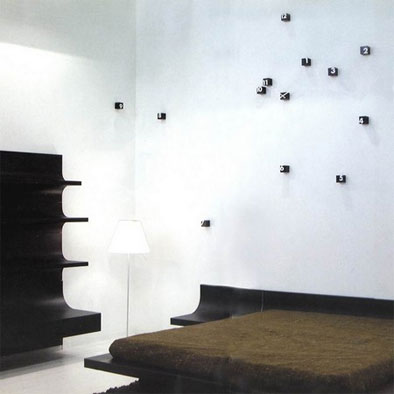
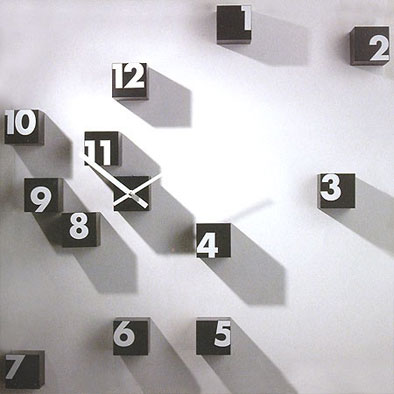
Rnd_time looks somewhat like a (programming) function, which is appropriate given its form: the “rnd” stands for “random”, in that each number is assigned its own cube, each of which can be randomly placed on the wall. Available in black with white numbering (or the reverse), the cubes aren’t too large–about 2 1/2″ LxWxH–but they do look like they could double as shelving for trinkets, small photos, and of course–action figures.
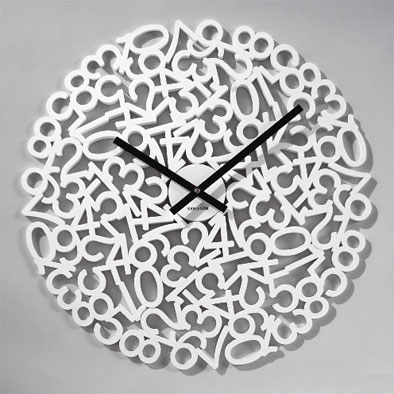
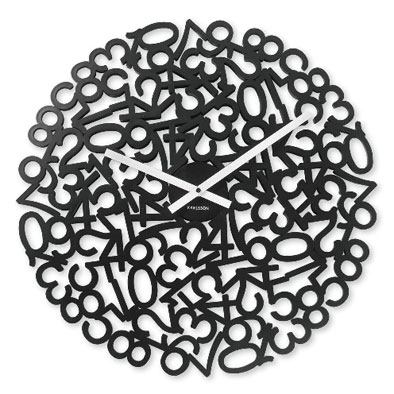
If mathematics isn’t your thing, you’re really not going to like the Numero Clock. The 24″ wide face is crammed full with numbers (I count at least 80) which are tightly packed enough to form a fairly interesting pattern that faintly resembles swiss cheese.
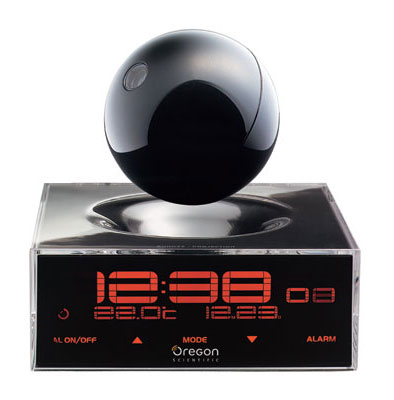
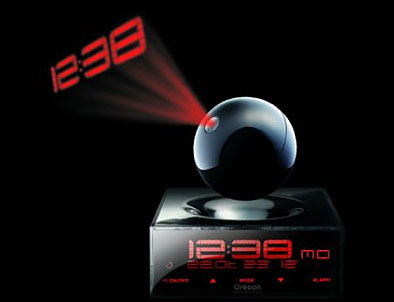
No, the Giovannoni clock (above) doesn’t float–though it would be really cool if it did. The image is more an example of beautiful but misleading marketing, since its primary feature is the ability to wirelessly transmit time from the rectangular base unit to the orb, or “time sphere”. The sphere can then be moved to another room and will project the time onto any surface, as long as it is within range of the transmitter.
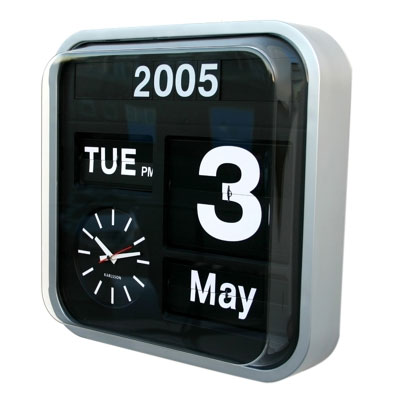
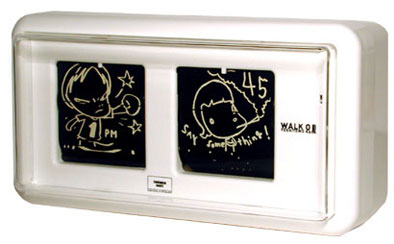

Flip clocks are my favorite – not nearly as complicated as the Gump clock at the beginning of this article, but mechanical enough to evince feelings of nostalgia. The retro-stylish Karlsson Flip Clock (above) actually has an analog timepiece, but does have a flip motion calendar. For real novelty, however, the immensely popular Yoshitomo Nara clock takes the cake: with 84 distinct drawings that represent the different hours and minutes of the day, it actually makes watching the clock fun.